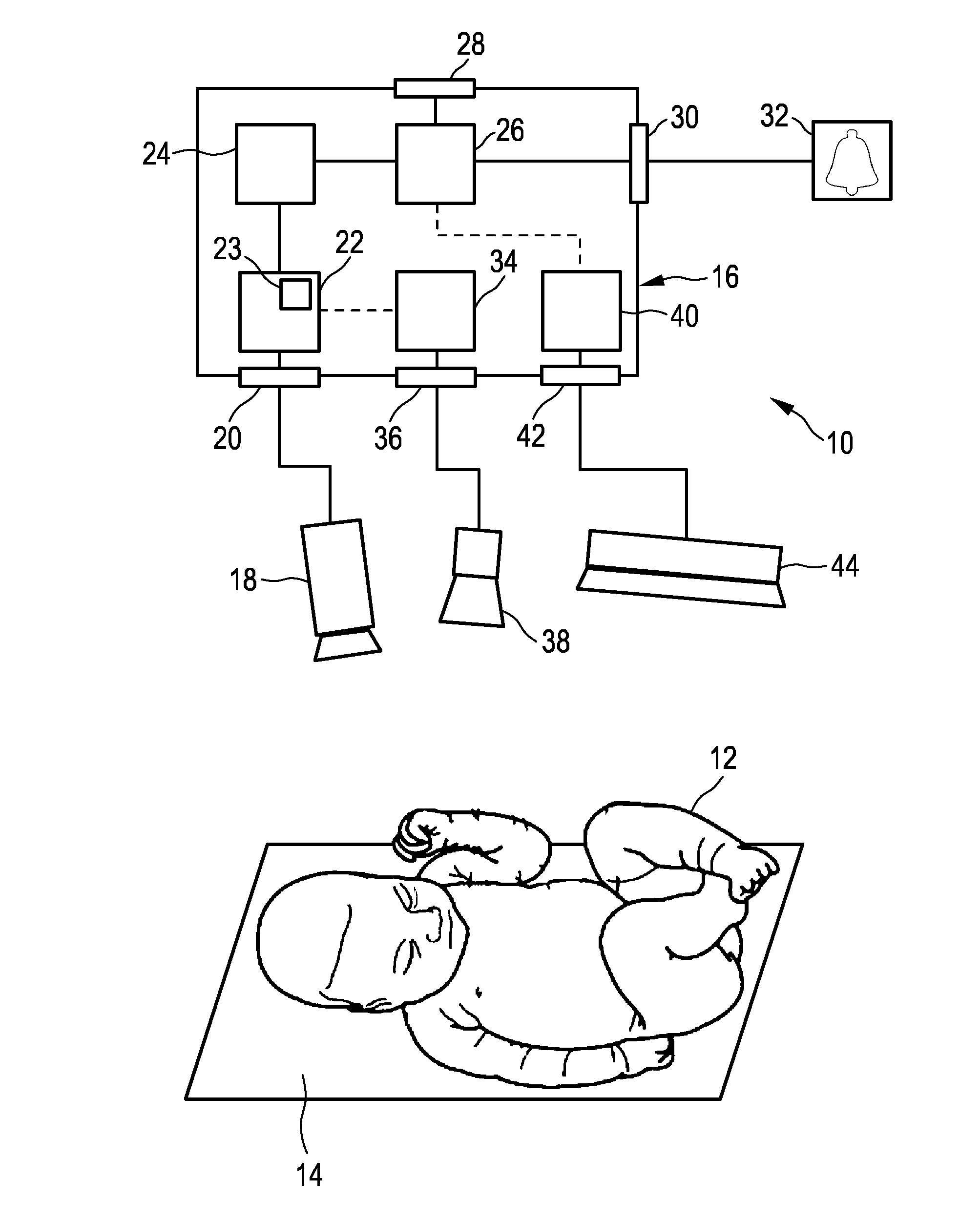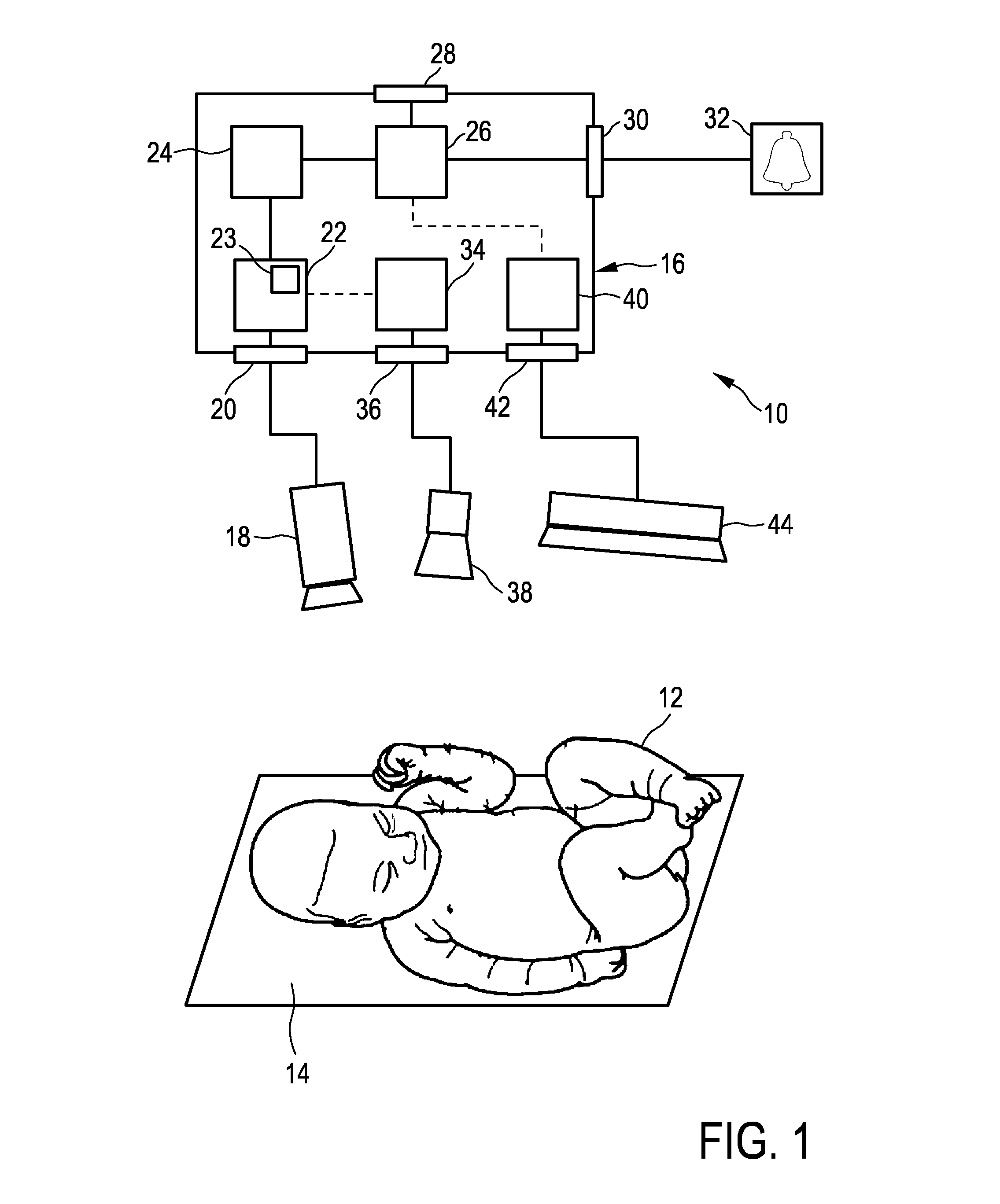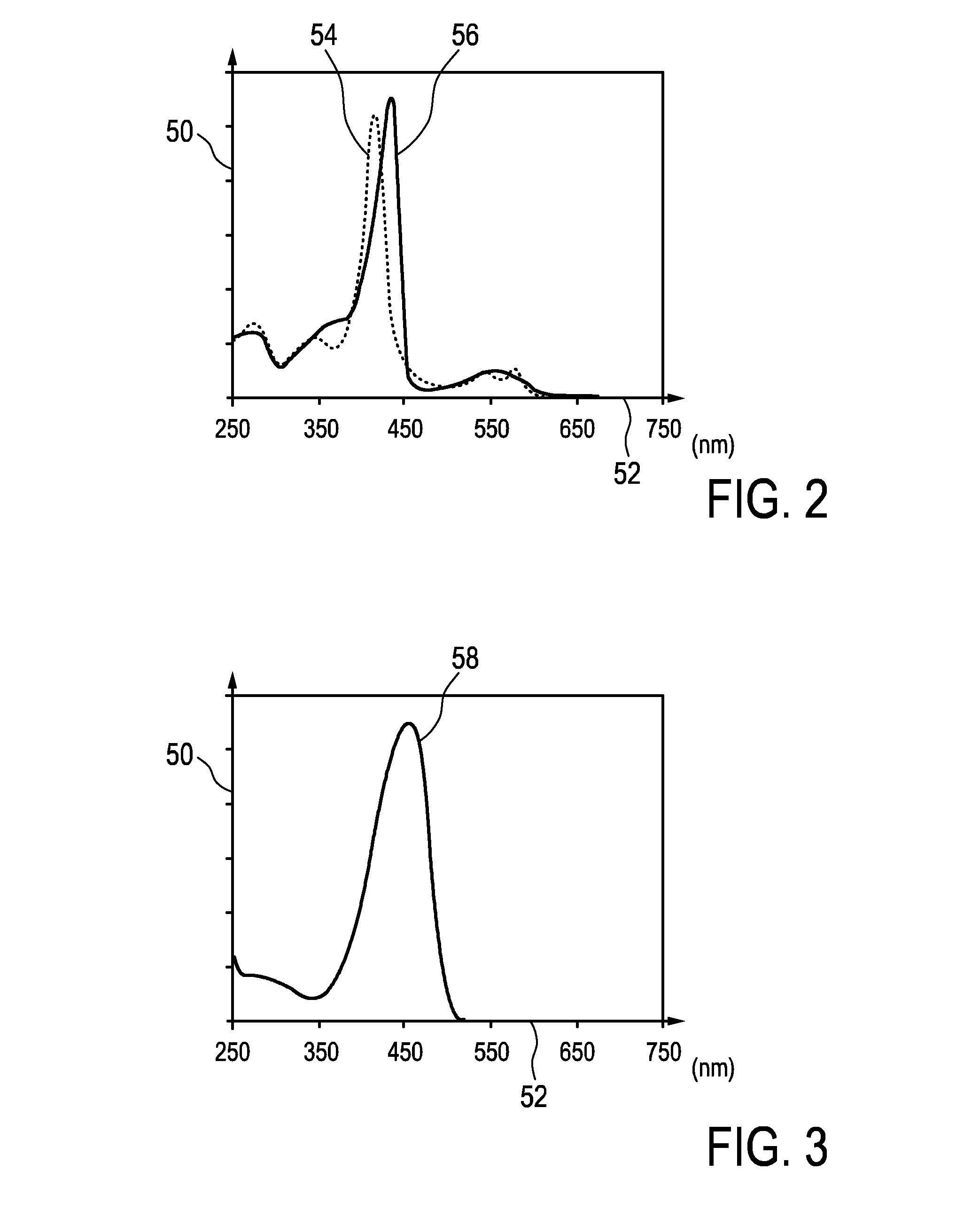System and method for extracting physiological information from remotely detected electromagnetic radiation
a technology of electromagnetic radiation and physiological information, which is applied in the field of system and method for extracting physiological information from remotely detected electromagnetic radiation, can solve the problems of not being able to understand the transmission, “reflected” and “experienced” in a limited way, and being considerably unpleasan
- Summary
- Abstract
- Description
- Claims
- Application Information
AI Technical Summary
Benefits of technology
Problems solved by technology
Method used
Image
Examples
Embodiment Construction
[0069]FIG. 1 shows a schematic illustration of a set-up of a system 10 in accordance with an embodiment of the present invention. By way of example, but not to be understood in a limiting way, the system 10 may be used in neonatal care units for monitoring a subject 12 such as a neonate or infant. In general, the system 10 may be configured for monitoring subjects 12 such as patients or, more generally, human beings or living beings. Especially neonates may be positioned on a lying surface 14 which may be part of a hospital bed or an arrangement specifically adapted for receiving and supporting newborn infants, such as an incubator.
[0070]Neonatal jaundice (also known as hyperbilirubinemia) often occurs among newborns since the neonate's liver might be underdeveloped at the very beginning and therefore not able to excrete and, consequently, reduce the level of bilirubin. So-called unconjugated bilirubin may be formed as a degradation by-product during the destruction of old red blood...
PUM
 Login to View More
Login to View More Abstract
Description
Claims
Application Information
 Login to View More
Login to View More - R&D
- Intellectual Property
- Life Sciences
- Materials
- Tech Scout
- Unparalleled Data Quality
- Higher Quality Content
- 60% Fewer Hallucinations
Browse by: Latest US Patents, China's latest patents, Technical Efficacy Thesaurus, Application Domain, Technology Topic, Popular Technical Reports.
© 2025 PatSnap. All rights reserved.Legal|Privacy policy|Modern Slavery Act Transparency Statement|Sitemap|About US| Contact US: help@patsnap.com



